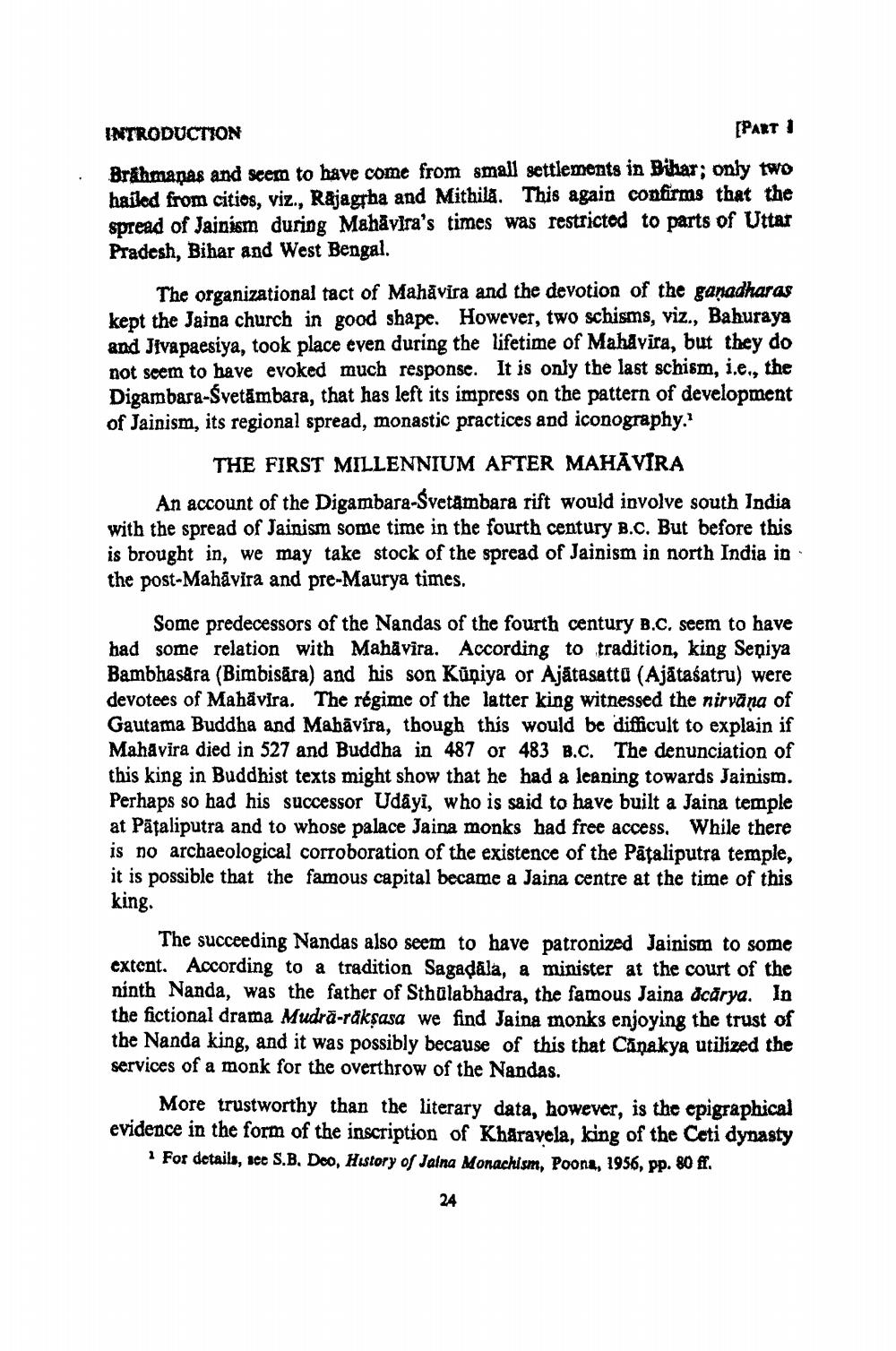________________
INTRODUCTION
[PART 1
Brahmanas and seem to have come from small settlements in Bihar; only two hailed from citios, viz., Raja grba and Mithila. This again confirms that the spread of Jainism during Mahăvira's times was restricted to parts of Uttar Pradesh, Bihar and West Bengal
The organizational tact of Mahāvira and the devotion of the ganadharas kept the Jaina church in good shape. However, two schisms, viz., Bahuraya and Jiva paesiya, took place even during the lifetime of Mahāvīra, but they do not seem to have evoked much response. It is only the last schism, i.e., the Digambara-Svetāmbara, that has left its impress on the pattern of development of Jainism, its regional spread, monastic practices and iconography.'
THE FIRST MILLENNIUM AFTER MAHAVIRA An account of the Digambara-Svetambara rift would involve south India with the spread of Jainism some time in the fourth century B.C. But before this is brought in, we may take stock of the spread of Jainism in north India in the post-Mahavira and pre-Maurya times.
Some predecessors of the Nandas of the fourth century B.C. seem to have had some relation with Mahāvira. According to tradition, king Sepiya Bambhasara (Bimbisāra) and his son Kūņiya or Ajātasatta (Ajātaśatru) were devotees of Mahāvira. The régime of the latter king witnessed the nirvana of Gautama Buddha and Mahāvira, though this would be difficult to explain if Mahavira died in 527 and Buddha in 487 or 483 B.C. The denunciation of this king in Buddhist texts might show that he had a leaning towards Jainism. Perhaps so had his successor Udayi, who is said to have built a Jaina temple at Pāšaliputra and to whose palace Jaina monks had free access. While there is no archaeological corroboration of the existence of the Pătaliputra temple, it is possible that the famous capital became a Jaina centre at the time of this king.
The succeeding Nandas also seem to have patronized Jainism to some extent. According to a tradition Sagadala, a minister at the court of the ninth Nanda, was the father of Sthalabhadra, the famous Jaina dcérya. In the fictional drama Mudra-raksasa we find Jaina monks enjoying the trust of the Nanda king, and it was possibly because of this that Cănakya utilized the services of a monk for the overthrow of the Nandas.
More trustworthy than the literary data, however, is the epigraphical evidence in the form of the inscription of Khåravela, king of the Ceti dynasty
1 For details, see S.B. Doo, History of Jalna Monachism, Poona, 1956, pp. 80 ff.
24




